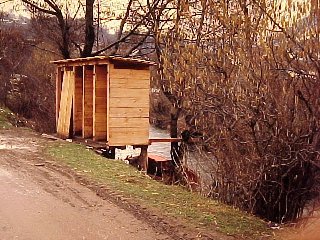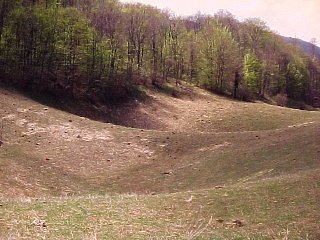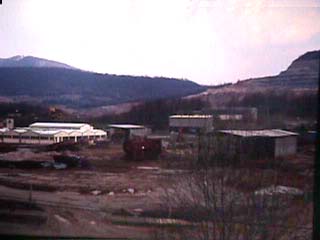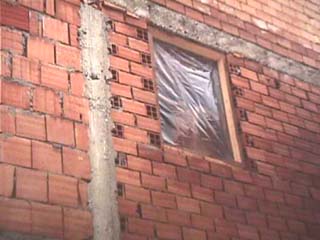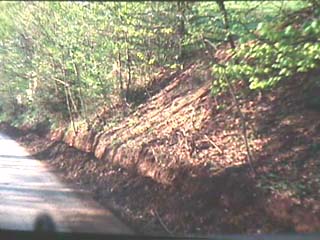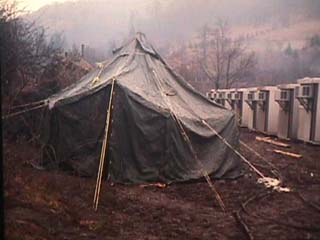 |
ACS tour coordinators tend to be solicitous about accomodations.
Army Reservists who have been mobilized twice tend not to be picky.
Here's where I spent ten wonderful days in Bosnia. Trust me, the Holiday
Inn is just fine. |
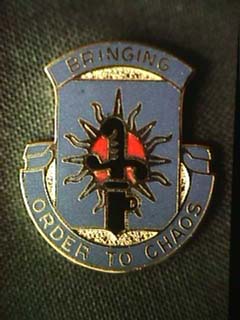 |
I belong to the 43dnd Civil Affairs Battalion, whose crest is shown
here. Civil Affairs deals with any civilian issues that might affect
military operations. That may include relief operations, but the first
priority is to keep civilian problems from interfering with military
operations. The scene in Saving Private Ryan where a soldier
gets killed trying to evacuate civilians is a perfect illustration of
what Civil Affairs is not. Not only did the soldier get himself
killed, but his mission was not to rescue civilians, and civilians are
usually safer staying under shelter in any case. |
The Persian Gulf War
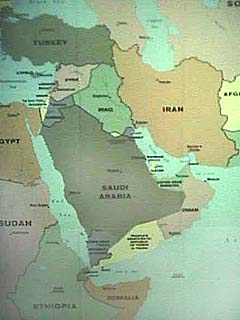 |
|
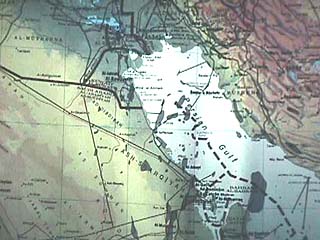 |
|
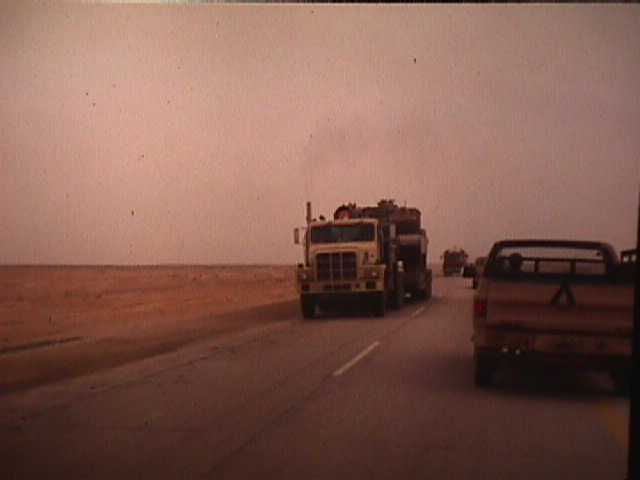 |
|
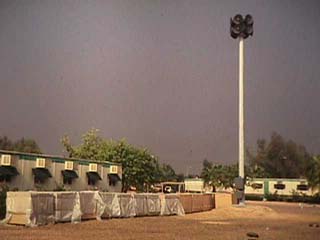 |
Our first view of the burning oil fields came before the ground
war even started. In Al-Jubail, about 100 miles from Kuwait, the sky
had this weird look of an impending storm. |
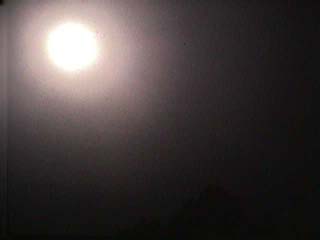 |
The smoke turned the sky dark gray, although it was cloudless. Temperatures
were in the 50's instead of the 80's that had been normal. |
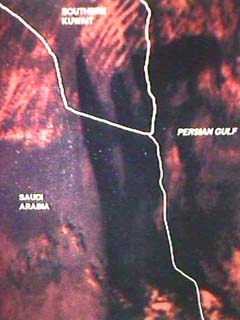 |
This satellite image, obtained about the same date as the precding
photos, shows long tendrils of smoke drifting south from Kuwait. At
this time only a few wells had been set on fire. |
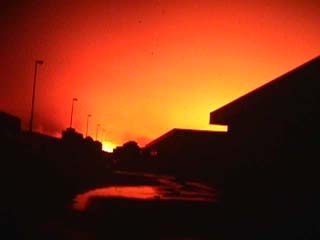 |
Our first view of Kuwait, 3 A.M. on March 1, 1991. The light in
the sky is not approaching dawn but light from burning oil wells. |
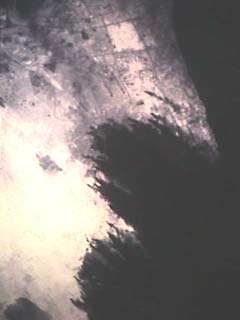 |
This satellite image taken the following day shows the full extent
of the problem. The Maqwa-Burgan oil field is the second largest in
the world. It's a single geologic structure but the wells are in two
clusters, Maqwa in the north and Burgan in the south. Each trail of
smoke marks a burning well. Between the two fields is the town of Al-ahmadi,
which was in near total darkness for months. |
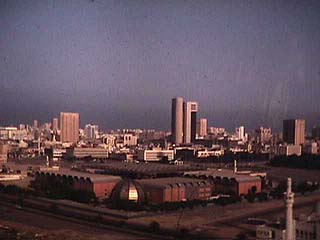 |
This view of Kuwait City shows little damage, though on close inspection
a number of fire scars can be seen. |
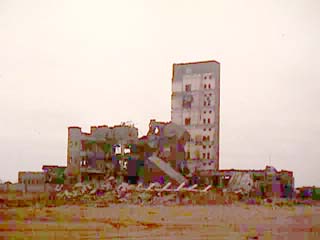 |
Among the worst battle damage in Kuwait was the national telephone
exchange, which was used as a communications center by the Iraqis. |
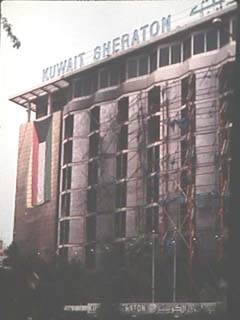 |
|
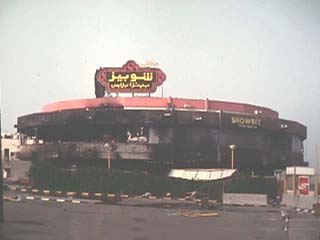 |
|
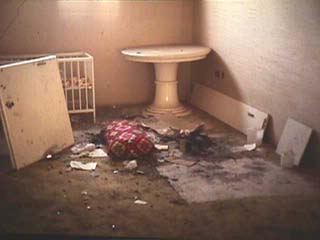 |
|
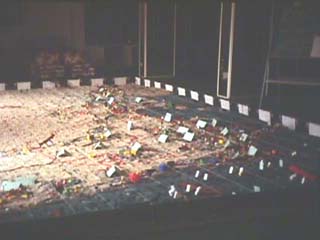 |
|
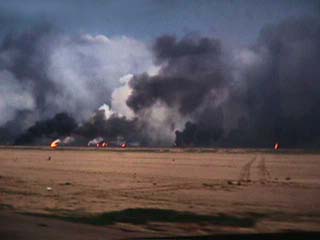 |
The Rawdatain Oil Field, north of Kuwait, shows a fascinating variety
of smoke plumes, from jet black to pure white. The variations are probably
related to particle size, completeness of combustion, and proportion
of gas to oil in the well. The pure white is largely due to particulates
of salt derived from saline brines in the oil source rocks. |
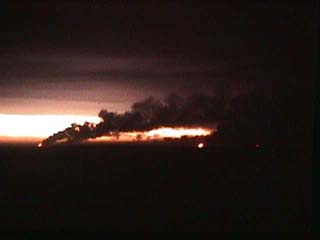 |
The smoke could turn day into night. This photo was taken in mid-afternoon. |
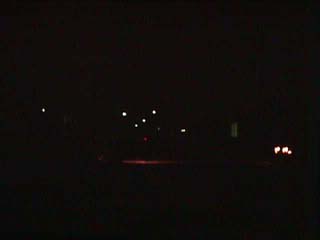 |
Normally, there was at least some daylight from overhead or at the
horizon. Here, though, at 11 A.M. on Palm Sunday, March 24, 1991, it
is literally impossible to tell if it's 11 A.M. or 11 P.M. There was
no daylight anywhere. |
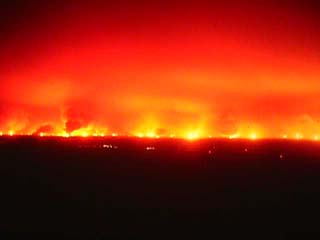 |
At other times, the fires could turn night into day. I counted 96
burning wells from this vantage point. |
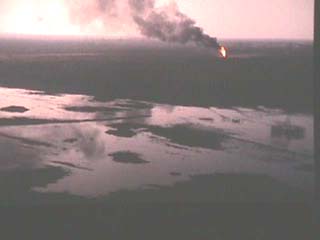 |
What's worse than a burning oil well? Answer, a well that's not
burning. The lake in the foreground is oil. The wellhead is visible
within the fence at right, spouting oil. |
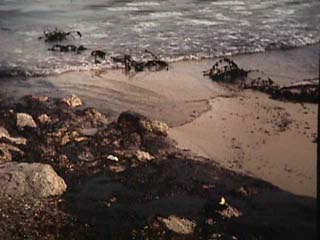 |
We were never in a position to observe the really large oil slicks
in the Persian Gulf, but here some oil is washing up onto a beach in
Kuwait City. Behind the buried barbed wire are mines, so we didn't go
beach-combing. |
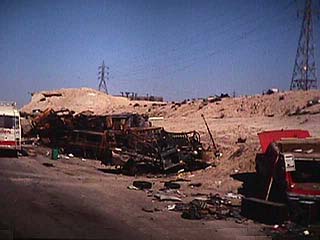 |
A low line of bluffs west of Kuwait furnishes a stark lesson in
military geography. The terrain is just rough enough to prevent off-road
travel. Allied forces caught the retreating Iraqis here. Once the road
was blocked, there was no place to run. The press used the lurid term "Valley
of Death" for this spot, but most troops in Kuwait simply called
it the "choke point." |
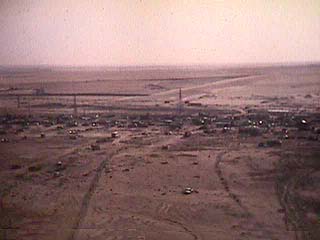 |
An aerial view shows the resulting chaos. By the fall of 1991 this
debris had been entirely cleared away. |
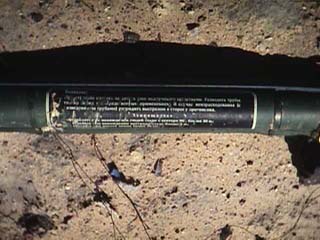 |
A Russian anti-tank rocket in the debris. |
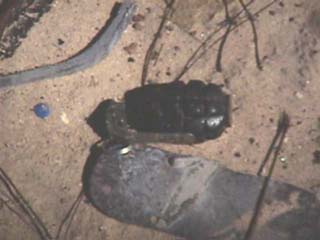 |
I didn't realize anybody still used old-fashioned pineapple grenades. |
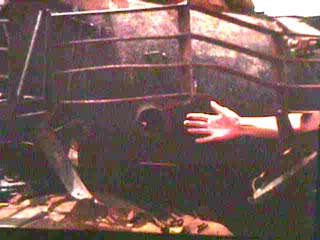 |
The turret of an Iraqi T-72 tank. It was hit by a sabot round, a
rod of depleted uranium. There was a lot of talk about "smart bombs"
during the war. A sabot round is about as dumb as a bomb can get. It
doesn't even have an explosive charge, but it will punch through a tank.
Here's where the round entered.... |
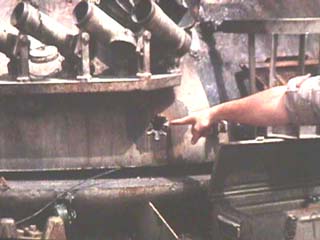 |
...And here's where it came out. When the round enters the tank,
it's preceded by a spray of white-hot metal fragments that will kill
everyone in the tank and set off anything flammable or explosive. It
also trails a shock wave, so the tank goes from one atmosphere to several
to vacuum as the round exits the tank. Occupants can be turned inside
out or suched through the exit hole by the pressure changes. Anyone
who thinks Newtonian physics has been rendered obsolete by relativity
and quantum mechanics should take note. |
Kurdistan
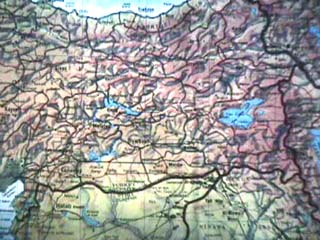 |
|
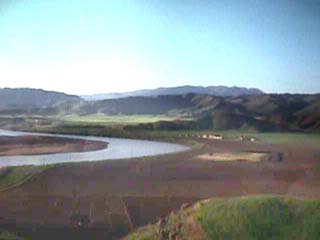 |
We got to cross both the Tigris and Euphrates Rivers in one day.
This is the Tigris River near where Turkey, Iraq and Syria meet. |
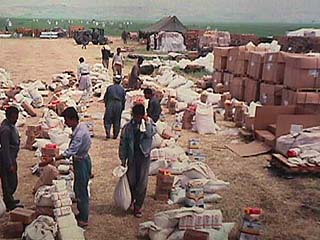 |
|
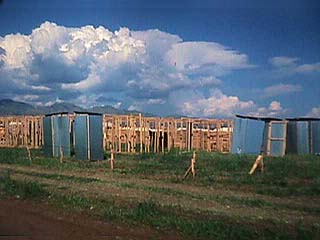 |
This was truly a heart-warming sight. One of the criteria for the
UN taking over the camps was adequate sanitation. These outhouses were
built by Turkish civilian workers. Every one built was one outhouse
closer to going home. |
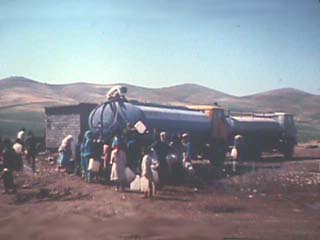 |
The single most life-threatening issue in refugee operations is
water. People can go without food for several days, but after 24 hours
without water, they find it wherever they can, regardless of contamination.
Fortunately, there were good wells already available at this site. |
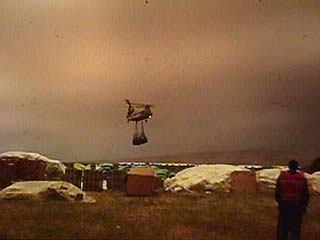 |
A helicopter bringing supplies to the camps. At first we wondered
if the odd orange sky was due to smoke from Kuwait. Then it rained and
the problem was solved. Every drop left a pink residue; the color was
due to airborne dust. |
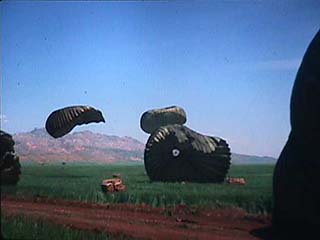 |
The culmination of The Wildest Birthday Party Ever. We started Camp
II on my 44th birthday, May 10, 1991. To speed matters up, someone decided
to airdrop tents. It got very wild when the Kurds ran into the drop
zone to see what was coming down. |
A Few Items From Bosnia, 1996
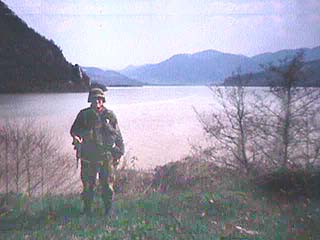 |
|




































